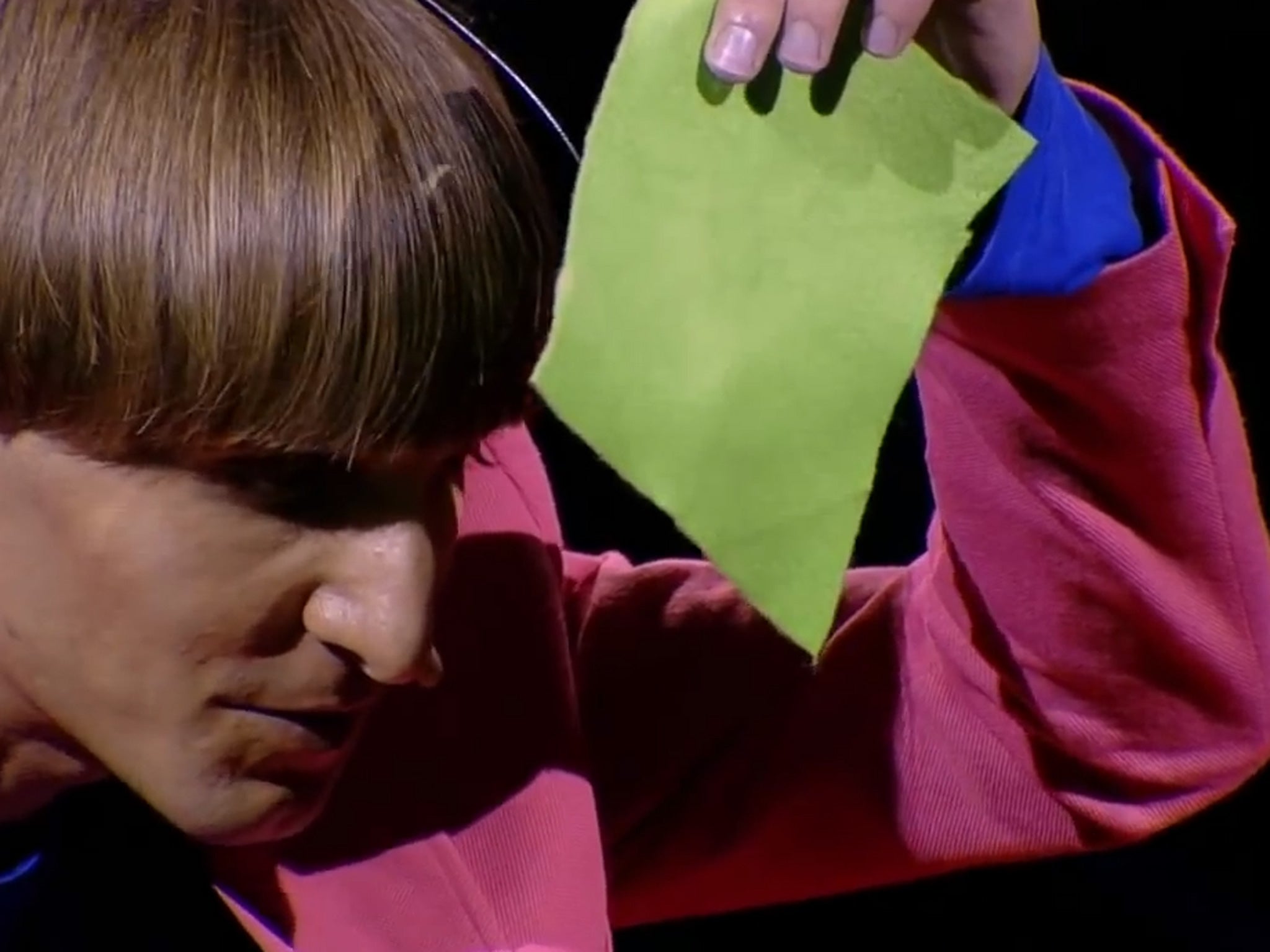Colour-blind artist implants 'eyeborg' device into his skull to 'hear' colours as sounds
A camera translates colours into sounds, with an implanted chip relaying these as vibrations through sent directly through the skull

A colour-blind artist says he has successfully implanted an electronic chip into his skull that allows him to hear different shades and hues as sound vibrations.
Neil Harbisson, 31, was born with a rare conditions called achromatopsia that limits his colour perception to just black and white. Since 2004 the Camden-born Harbisson has been developing a device which he calls an “eyeborg” to help him ‘see’ colours.
The “eyeborg” consists of an camera that curls over the top of Harbisson’s head like an antenna, converting colour input into specific sounds. The process is similar to synaesthesia - a neurological phenomena that mixes up an individuals' sensory input leading to various conditions such as perceiving numbers as colours.
The “eyeborg” previously transmitted sounds to Harbisson by pressing an audio unit against the base of his head to reverberate sounds through his skull to his eardrums. The implanted version, fitted in a series of operations in Barcelona, should allow him to receive more nuanced signals, directly transmitting vibrations to his ear much like a cochlear implant.
New Wi-Fi and Bluetooth connections will also allow images to be beamed directly to Harbisson without using the camera – making him the first person to experience an image in this way without seeing it first-hand.
“This announcement is not the launch of a new product and it is not the presentation of new technology - it is the presentation of a new body part that will allow us to extend our senses in unimaginable ways,” said Harbisson, ahead of a demonstration at London's Central Saint Martins College of Arts and Design.
Speaking at a TED talk in Edinburgh in 2012, Harbisson said it had taken him a year to persuade surgeons to undertake the operation, with many of the hospitals he approached dismissing his project as a joke.
“I come from a grayscale world,” said Harbisson at the talk. “To me, the sky is always gray, flowers are always gray, and television is still in black and white. But, since the age of 21, instead of seeing color, I can hear color.”
“I've been hearing color all the time for eight years, since 2004, so I find it completely normal now to hear color all the time. At the start, though, I had to memorize the names you give for each color, so I had to memorize the notes, but after some time, all this information became a perception. I didn't have to think about the notes. “
“Life has changed dramatically since I hear color, because color is almost everywhere, so the biggest change for example is going to an art gallery, I can listen to a Picasso, for example. So it's like I'm going to a concert hall, because I can listen to the paintings. And supermarkets, I find this is very shocking, it's very, very attractive to walk along a supermarket. It's like going to a nightclub.”
Subscribe to Independent Premium to bookmark this article
Want to bookmark your favourite articles and stories to read or reference later? Start your Independent Premium subscription today.

Join our commenting forum
Join thought-provoking conversations, follow other Independent readers and see their replies